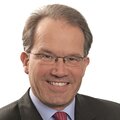On 14 March 2022, the OECD/G20 Inclusive Framework on BEPS released its guidance on technical issues related to the 15% global minimum tax agreed in 2021 (Pillar Two). Pillar Two is part of the two-pillar solution to address the tax challenges arising from digitalization of the economy. Pillar Two consists of the Global Anti-Base Erosion (GloBE) Rules, which aim to provide for a coordinated system to ensure that Multinational Enterprises (MNEs) with revenues above EUR 750 million pay a minimum level of at least 15% tax on the income generated in each of the jurisdictions in which they operate. The GloBE Rules were agreed by 135 jurisdictions and released by the Inclusive Framework of the OECD on 20 December 2021. Two days later, the European Union followed with a draft directive to implement the GloBe Rules within the EU. According to the latest draft EU directive, the application of GloBe Rules in the EU shall be deferred to 1 January 2024.
The commentary published by the Inclusive Framework on 14 March 2022 (“Commentary”) provides technical guidance and elaborates on the application and operation of the GloBE Rules. Please find some aspects of the Commentary important for the Financial Services industry outlined below.
General: dividends and capital gains on Equity
An important aspect of the GloBE Rules is the income computation (tax assessment basis). Comparable to many national tax regimes, dividends and capital gains on equity are excluded from the tax base. However, the conditions for exclusion from the tax base under Pillar Two may be stricter than under national tax regimes: a min. 10% holding threshold applies to dividends as well as capital gains and a holding period of one year before dividend distribution must be fulfilled. Especially, the minimum threshold of 10% for capital gains may significantly increase the Pillar Two tax base compared to national tax bases.
Investment funds
Investment Funds are out of scope of GloBE Rules if the Investment Fund is the Ultimate Parent Entity (UPE). In this case, the Investment Fund’s SPVs and holding vehicles will also be out of scope. Thus, retail funds will generally not be in scope of Pillar Two. Controlled investment funds (non-retail) are in scope of Pillar Two, usually treated as “Investment Entities” of the fund investors. The fund’s treatment largely depends on whether or to which extent the fund is considered a Tax Transparent Entity. An entity is a Tax Transparent Entity in so far as its income, expenditure, profit or loss are treated as if they were derived or incurred directly by the owner, in both the fund’s jurisdiction as well as in the investor’s jurisdiction. The transparency status of an entity is generally conserved under GloBE Rules, respective income is thus allocated directly to the investor.
On the other hand, the investor of an opaque fund may opt to treat an Investment Entity that is not tax transparent as being tax transparent, thus allocating the Investment Entity’s income directly to the investor. This option is conditioned by a mark-to-market (or similar) taxation of the investor’s income derived from the Investment Entity at a rate of at least 15%. A potential benefit of opting for transparency is that the investor may apply the Substance-based Income Exclusion with respect to its share of the income of the Investment Entity and thus deduct management costs borne by the investor.
Where the before described conditions for opting for transparency are not met, the investor may choose to include distributions received and deemed distributions from the Invest�ment Entity in the computation of its GloBE Income or Loss (“Taxable Distribution Method Election”). The investor’s share of the Investment Entity’s income is excluded from the MNE Group’s GloBE Income or Loss computations so long as it is distributed to the investor within four years (tax deferral) and subject to at least 15% taxation; this mechanism shall technically reduce the exposure to Top-up Tax.
Where neither of the before described options are applied by an investor holding an opaque fund, special rules for computing the Effective Tax Rate (ETR) and Top-Up Tax apply. As income from investment funds is usually subject to low or zero taxation, the fund’s ETR is computed on a stand-alone basis in order to avoid a blending with income of other Constituent Entities. However, for multiple opaque Investment Entities within the same jurisdictions the ETR is computed uniformly. Additionally, taxes suffered by the investor on income from the investment fund is allocated to the investment fund for purposes of allocating the stand-alone ETR, potentially decreasing the risk of Top-Up Tax.
Pension funds
Pension funds, comparable entities as well as group-owned service providers will generally be out of scope of the GloBE Rules as “excluded entities”.
Under Pillar Two, Pension Funds are entities that are established and operated (almost) exclusively to administer or provide retirement benefits and ancillary and incidental benefits to individuals. The autonomous Pillar Two definition does not only cover regulated pension funds but also non-regulated entities held by a trust or other fiduciary arrangement in order to meet pension obligations that are secured or otherwise protected by national regulation. This includes e.g. self-administered pensions funds. Additionally, unlike the OECD Model Tax Convention, Pillar Two - in order to allow for Pension Funds to be formed in different legal arrangements - does not require a Pension Fund to be taxable as a separate person in its home jurisdiction.
The definition of Pension Funds covers not only the fund as such but is extended to so-called Pension Services Entity. Pension Services Entity can be vehicles that (almost) exclusively invest funds for the benefit of Pension Funds, i.e. SPVs of a Pension Fund. Interestingly, Pension Services Entity are also entities that are established and operated (almost) exclusively to carry out activities that are ancillary to the regulated activities of the Pension Fund and which are part of the same MNE. This includes the group-owned pension fund manager, as well as further entities that advise the fund manager (e.g. a jurisdiction specific invest�ment advisor). Hence, the service does not have to be provided to the Pension Fund directly.
As the Pillar Two definition of Pension Funds is rather material and not strictly applying national supervisory law, single-investor funds investing pension monies may possibly also be in scope of the definition of a Pension Fund and thus out of scope of Pillar Two.
Read the WTS Global Financial Services Newsletter here.






